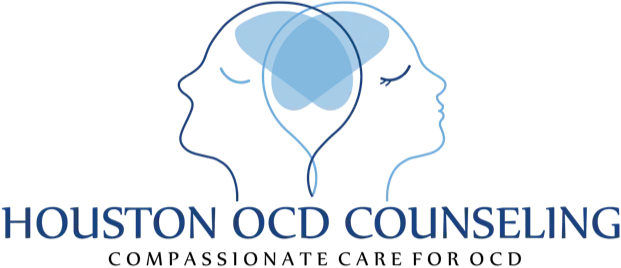
OBSESSIVE-COMPULSIVE DISORDER (OCD)
Obsessive-Compulsive Disorder (OCD) is a mental health disorder that affects people of all ages and walks of life and occurs when a person gets caught in a cycle of obsessions and compulsions. Obsessions are unwanted, intrusive thoughts, images, or urges that trigger intensely distressing feelings. Compulsions are behaviors an individual engages in to attempt to get rid of the obsessions and/or decrease his or her distress. There are different subtypes of OCD like contamination obsessions, violent obsessions, sexual obsessions, and symmetry obsessions. Scientific researchers in the last few years have discovered effective treatments for Obsessive-Compulsive Disorder (OCD) that have dramatically reduced symptoms in individuals suffering from OCD. Evidence-based treatment using Cognitive-Behavioral Therapy and Exposure/Response Prevention is scientifically proven to be the most effective treatment for OCD in the world today. Michael Soderstrom, MA, LPC-S treats all sub-types of Obsessive-Compulsive Disorder (OCD) such as Contamination OCD, Relationship OCD, Harm OCD, Perfectionism, Sexual Orientation OCD, Religious OCD, Driving OCD, Pedophile OCD, Checking OCD, and many other unique forms of OCD. On average, successful treatment for OCD using CBT lasts for about 22 sessions of psychotherapy.

BODY DYSMORPHIC DISORDER
Body Dysmorphic Disorder (BDD) is a preoccupation with one or more perceived defects or flaws in physical appearance that are not observable or appear slight to others (American Psychiatric Association, 2013). At some point during the course of the disorder, the individual has performed repetitive behaviors (e.g., mirror checking, excessive grooming, skin picking, reassurance seeking) or mental acts (e.g., comparing his or her appearance with that of others) in response to the appearance concerns (American Psychiatric Association, 2013). BDD is associated with high levels of anxiety, social anxiety, social avoidance, depressed mood, and perfectionism as well as low extroversion and low self-esteem (American Psychiatric Association, 2013). Through Cognitive Behavioral Therapy (CBT) and other forms of treatment modalities, one can recover from BDD. Michael Soderstrom, MA, LPC-S treats his patients suffering from BDD using a structured, evidence-based, 22-session program.

SPECIFIC PHOBIA
Specific Phobia is an anxiety disorder involving intense, persistent and irrational fear of an object or situation. People, suffering from a significant phobia, experience extreme distress (and even panic attacks at times) in the presence of or in anticipation of the feared object or situation. This feared object or situation is either avoided or endured with intense distress. These phobias normally cause numerous disruptions in an individual’s daily routine in both their private and professional life. There are many different types of specific phobias like insects, animals, flying, heights, storms, needles, seeing blood, and situational phobias (e.g. closed spaces, elevator). Exposure/Response Prevention therapy and cognitive-behavioral therapy are the most effective treatments. Exposure/Response Prevention therapy focuses on changing your responses to the object or situation that you fear. Gradual, repeated exposure to the source of your specific phobia and the related thoughts, feelings and sensations may help you learn to manage your anxiety. Cognitive-behavioral therapy (CBT) involves exposure combined with other techniques to learn ways to view and cope with the feared object or situation differently. You learn alternative beliefs about your fears and bodily sensations and the impact they’ve had on your life.

SOCIAL ANXIETY DISORDER
Social Anxiety Disorder is a mental health condition where regular social situations may cause people to feel excessive anxiety and unreasonable fear. Individuals with this disorder get worried about being embarrassed or evaluated negatively in performance-related situations. These people’s worries include fear of crowds, public speaking, business meetings, and talking to strangers. People with social anxiety disorder experience a variety of different physical symptoms (e.g. high pulse rate, fast heartbeat, uneasiness, sweating, etc). Because they are fearful of being judged by others or being laughed at these individuals will try their best to avoid being the center of attention. They may worry about saying or doing something that might cause others to judge them negatively. For some people with this condition, anxiety and fear can get so excessive that many will avoid all social situations completely. Cognitive-Behavioral Therapy is the most effective type of psychotherapy for anxiety and is shown to be equally effective with Social Anxiety Disorder. In exposure-based, cognitive-behavioral therapy, you gradually work up to facing the situations you fear most while using newly acquired coping skills.

GENERALIZED ANXIETY DISORDER
Generalized Anxiety Disorder is the persistent worry and anxiety about routine activities and ordinary things that are involved in day-to-day activities. This condition is called Generalized Anxiety Disorder because it is not associated with any specific fear, situation or object; the anxiety and restlessness may change in intensity for different things and situations. Individuals with this disorder often experience physical symptoms like muscle tension, headaches, irritability, fatigue, sleep problems, stomach discomfort, and difficulty concentrating. They tend to think negatively about things at home, work, school and seem to worry out of proportion about something bad always potentially occurring. Cognitive-Behavioral Therapy is the most effective form of psychotherapy for Generalized Anxiety Disorder. Cognitive-Behavioral Therapy focuses on teaching you specific skills to directly manage your worries and help you gradually return to the activities you’ve avoided because of anxiety. Through this process, your symptoms improve as you build on your initial success.

VOMITING PHOBIA
Vomiting Phobia, also known as Emetophobia, is a type of specific phobia that involves excessive fear of vomiting, seeing others vomiting, or feeling sick randomly. A person with this disorder tends to avoid situations and activities that may enhance the chance of vomiting. This may lead to the individual changing their personal behaviors, like avoiding foods associated with vomiting, eating very little, avoiding crowded public settings, staying away from public bathrooms, etc. As with other forms of OCD, once identified as a case of emetophobia, Exposure/Response Prevention (ERP), as well as Cognitive-Behavioral Therapy, can be applied as the core treatment. In emetophobia treatment, ERP is best applied to three different areas of the emetophobic symptoms: The first area is the physiological symptoms associated with nausea and vomiting itself, which trigger anxiety. A second area is the environmental triggers of emetophobic anxiety. A final area of treatment involves exposure to the act of vomiting itself. I do not require or recommend having the emetophobic vomit because I do not think it necessary for recovery. Instead, therapy involves having the emetophobic engage in simulated vomiting.

PANIC ATTACK DISORDER
Panic Disorder is an anxiety disorder that is characterized by recurrent, unanticipated anxiety attacks in individuals. Although panic disorder can sometimes begin in childhood, the onset of this condition is usually found to occur between late adolescence and the mid-30s. The sudden and unexpected anxiety attacks can result in a variety of physical symptoms including heavy breathing, racing heartbeat, feeling sick, sweating, shaking/shivering, chest pain, feelings of choking, and getting dizzy. People who have experienced panic attacks in the past, individuals will often suffer from excessive fear of having another panic attack. They also seem to worry about the consequences of their panic attack and the associated implications, including serious physical symptoms. Cognitive-Behavioral Therapy can help you learn, through your own experience, that panic symptoms are not dangerous. Your therapist will help you gradually re-create the symptoms of a panic attack in a safe, repetitive manner. Once the physical sensations of panic no longer feel threatening, the attacks begin to resolve. Successful treatment can also help you overcome fears of situations that you’ve avoided because of panic attacks.

HEALTH ANXIETY
Health Anxiety Treatment involves the use of psychotherapy, particularly Cognitive-Behavioral Therapy, to target the thoughts and behaviors of people with health anxiety. Health anxiety (also called illness anxiety or hypochondria) is the obsessive worrying about having serious medical condition or illness, without having had any diagnosis from a doctor. This condition is characterized by the tendency to exaggerate minor symptoms or illnesses. They fear that different body functions are not working properly or there are major issues with specific body parts or organs. With these recurring thoughts, these individuals employ excessive diagnosis, repeatedly visit their doctor, and regularly self-check their vital signs (pulse, blood pressure or temperature). This fear, of having a serious illness, can also lead to other types of behavior by some people who avoid seeing their doctor or getting their tests done due to fear of being diagnosed with some medical condition. Because physical sensations can be related to emotional distress and health anxiety, psychotherapy — particularly Cognitive-Behavioral Therapy (CBT) — can be an effective treatment. CBT helps you learn skills to manage health anxiety disorder and find different ways to manage your worries other than excessive medical testing or avoidance of medical care.

PERFECTIONISM
Perfectionism occurs when people set unrealistically high standards of being perfect at something. Such people have the tendency to fear failure and they believe they should not make any mistakes. In trying to achieve perfection, they often procrastinate while worrying about little details and wanting to make sure everything is perfect. The expectation to be flawless leads them to feel overwhelmed and stressed about their work and daily life. People with this tendency often get bogged down in too many details thus causing avoidable delays and leading to deadlines being missed. Perfectionism is not only a risk factor for developing psychological disorders like depression, anxiety and eating disorders, but it can also be a poor prognostic factor for treatment success with other disorders. Cognitive-Behavioral Therapy and Exposure/Response Prevention are highly effective in reducing perfectionism by changing the way people think about success and by doing behavioral experiments so that the people can see what it’s like to not use their current safety behaviors or compulsions. Both of these research-supported and user-friendly treatments can enhance productivity without compromising the pursuit of excellence.

SKIN PICKING/HAIR-PULLING DISORDERS
Skin picking (Excoriation Disorder) is a type of mental disorder where people repeatedly pick their skin. Skin picking can cause cuts, lesions, bleeding, and permanent damage to the skin. Hair-pulling (Trichotillomania) is a mental disorder that involves recurrent, irresistible urges to pull out hair from your scalp, eyebrows or other areas of your body, despite trying to stop. Our counselors at Houston OCD Counseling only provide evidence-based solutions to deal with these disorders by using Cognitive-Behavioral Therapy and Habit Reversal Training. These two therapies used in combination can significantly reduce symptoms of hair-pulling and skin picking. Michael Soderstrom, MA, LPC-S uses a structured, evidence-based, 10 session program to successfully treat Skin Picking and Hair-Pulling Disorders.
